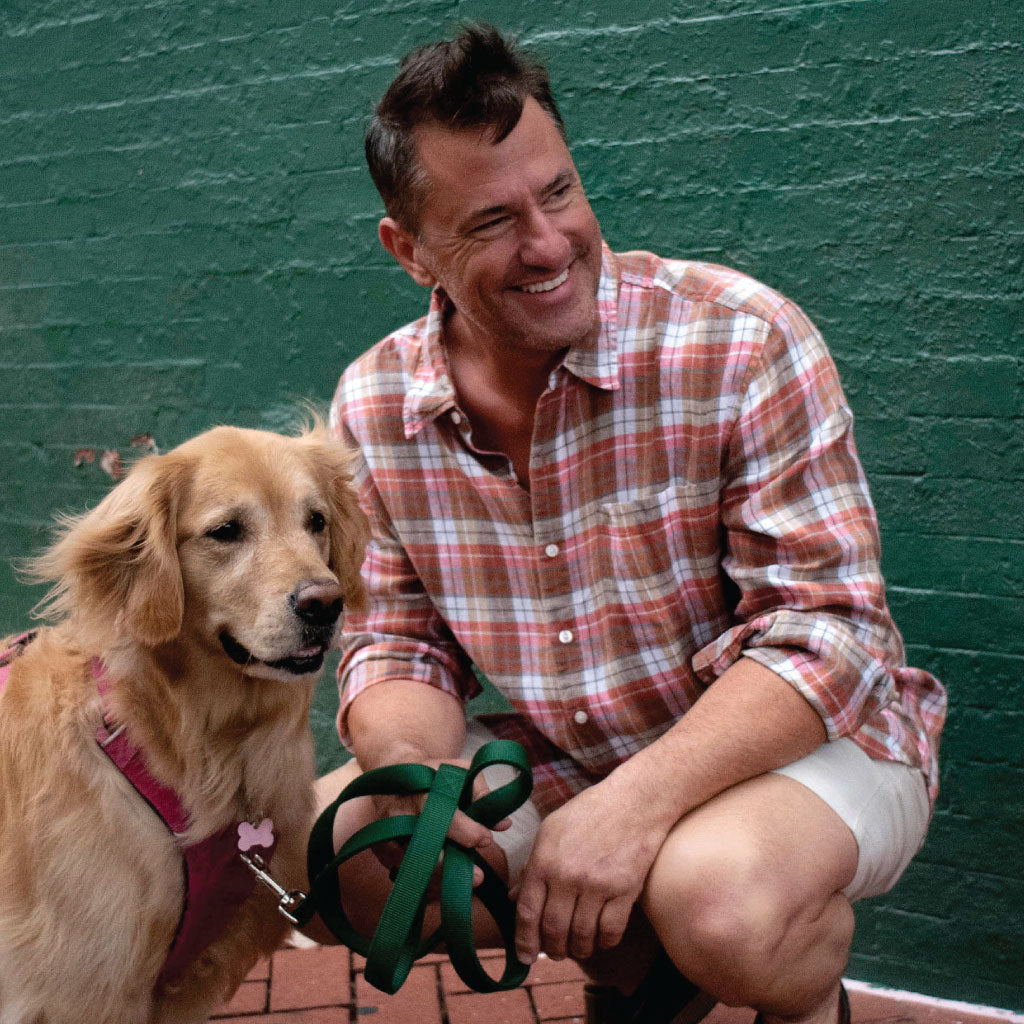
Adventures in ballooning
By: Amanda Warehime
Reaching the launch field in the dark, just an hour or so before dawn, there is a palpable feeling of restrained excitement. Thousands dressed warmly against the desert morning chill, warm blankets draped over shoulders, families with still-sleeping toddlers tucked into strollers, couples with arms wrapped tightly around each other. It feels cozy and comfortable, this morning shield.
A flicker of scattered lights, and eyes are drawn skyward to the early launching balloons of the Dawn Patrol, the air around so quiet that you can hear the firing of their burners over the distance, gently lifting them. They twinkle on and off against the black backdrop of the sky like colorful lightbulbs.

Bleary-eyed, people wander through the launch field gates, the inviting smell of brewing coffee, cooking eggs, and roasting chile drifting through the air. You quickly grab a cup of coffee and a warm breakfast burrito, then wander about checking out the crews as they begin unrolling balloon envelopes, giant fans whirring at their throats, billowing the fabric. An announcer comes over loudspeakers that can be heard from every corner of the 80-acre field.
As the sun breaks over the mountains, a gentle breeze picks up and the energy builds. Burners fire and balloons filled with warm air pop upright all around you, a magical forest of color stretching in every direction. Whistles blow to clear a path, and the first wave lifts to the sound of cheers.

Photo By: Amanda Warehime
Wave after wave of balloons follow, more than 500 floating beauties in all, splashing the deep blue sky above you with color.
The Albuquerque International Balloon Fiesta is an event like no other, with broad-ranging appeal that attracts thousands from around the world each year for the first week in October. In addition to the Mass Ascension of hundreds of balloons, the Fiesta features several piloting skill contests; a Special Shapes Rodeo, where all of the uniquely-shaped balloons at the Fiesta have a special ascension; the America’s Challenge gas balloon race crowning the balloon traveling the longest distance; and balloon glows both morning and night, where you can walk among hundreds of illuminated balloons. There are also non-ballooning events like a chainsaw wood carving contest, music, sky diving, and fireworks. The Fiesta is the largest ballooning event in the world.
Although you can see the colorful balloons gracing the sky from almost every part of the city, the most amazing experience is directly on the launch field at Balloon Fiesta Park. Three years ago, I had the opportunity to revisit the Fiesta after a 15-year absence. It was an opportunity to take all four of my children to an event that had been a family tradition growing up.
My parents were the first to expose me to the beauty and awe that is the Albuquerque International Balloon Fiesta. In those days, we watched from one of the many ideal viewing locations off the field, in a parking lot at a nice, high vantage point east of I-25. We never went on the launch field in my youth, but we never needed to. It was incredible just to witness wave after wave lifting into the sky. It was also free, we could bring plenty of snacks, and my mom didn’t have to try to keep track of three overactive kids in the midst of hundreds of propane-firing, string-dangling, high-potential-for-one-of-us-kids-to-get-in-the-way balloons.

Photo By: Amanda Warehime
She and my dad didn’t get into crewing until my siblings and I had left the nest (at least temporarily) in 1998. She began as a “right throat holder,” meaning her job was to hold the opening of the envelope (the “balloon” part of the hot air balloon that is easily recognizable). First, a large fan blows air into the envelope, then a propane burner fires into the opening, heating the air inside, and beginning inflation. A second person would hold the “left throat,” and between them, they would ensure the safety of the envelope while the fan and flame were doing their work.
When the air heated enough, about 212 degrees Fahrenheit to allow liftoff, the envelope would rise and the crew could set the gondola, or basket, upright. By their added weight, tethers, and the pilot managing the heat inside the envelope, the crew keeps the balloon grounded until they are clear to launch. At the Albuquerque International Balloon Fiesta, that means waiting until they have clearance from a Zebra. Sounds like a magical fantasy land, but Zebras are so-called because of their black and white striped uniforms. The Zebras are the marshals of the field, ensuring the path on the ground is free of spectators and the sky above is clear of balloons so the pilot may launch. This is a big responsibility given that there are hundreds of balloons launching within a short timeframe.
Once aloft, the pilot takes advantage of the winds by controlling the balloon’s altitude, either further heating the air to rise, or releasing air and allowing it to cool in order to descend. As the winds pick up with the rising sun, balloon pilots in Albuquerque love to exploit a meteorological blessing known as “The Box.” In the crisp fall mornings of the Fiesta, lower level winds typically blow in one direction and upper level winds blow opposite. When present, The Box allows for the best balloon viewing as the balloons stay in the general vicinity of the launch field. But at times, the winds can blow hard and directional, sweeping the balloons rapidly off the field and making for a short Mass Ascension.
Now in her mid-70s, my mom has “given up these duties to a younger crew” and instead functions as an assistant to the pilot, ensuring all maps, log books, and equipment are in order. “I also keep an eye on the young ones,” she writes and I can imagine her half smile as she does so, “to make sure they do it right. There are many things that need to be done to ensure a safe inflation and flight.”
"We share our fear of heights."
As with me, her favorite memory of ballooning was her first time going up. We share our fear of heights, she probably more so than I. Her pilot understood that fear and only took her up 20 to 30 feet, keeping the balloon securely tethered to the ground. My mom was hooked. Her next ride was untethered and her final ride was at an elevation of a few thousand feet.
On one of those rides, sudden and sustained winds blew strongly from the northeast, racing the balloon across the cityscape of Albuquerque. Pilots avoid a city landing when they can and are legally required to try and keep a 1,000-foot elevation over populated areas. Power lines, buildings, vehicles, and the potential for injury or property damage all make the risk of such a landing too high. If a balloon must land on private property, one of the roles of the chase crew is to alert the owner and ask permission to land. In most cases, permission is granted as it makes for a great photo opportunity and a thrilling story.

Photo By: Amanda Warehime
The balloon my mom was riding in took a path straight through a corridor with no potential landing sites. The winds had picked up even more, and for the sake of safety, the pilot made the call to descend. “You are at the mercy of the winds,” my mom said.
They were flying in an Adams-style balloon, designed by a long-time ballooning family of pilots, and manufacturers of a specific balloon shape and “pop” top deflation system. This style of balloon can land in a tight space and quickly when necessary. A metal ring around the top of the balloon allows the pilot to “pop” the top by pulling the “red line,” a cord intended to let cool air into the balloon and permit it to descend. Many balloons place this flap on the side. The placement of the flap on top for the Adams balloon gives the pilot the ability to further control the descent of the balloon.
Pop top hot air balloon
If you see an Adams balloon pop its top, it can give you a scare to see just how quickly the envelope can collapse; however, pilots of these balloons know exactly how to use this to their advantage. This feature is handy in balloon flight contests where the pilot has to land as closely as possible to a mark on the field. It also allows for a quick landing in high winds as the envelope deflates rapidly and thus limits the chance that the basket and its riders will drag across the ground.
Although pilots carefully watch the weather reports, the weather can change quickly, and rapid decisions must occasionally be made about where to land. There is not always a convenient spot, and sometimes the choice can be frightening or even (in retrospect) comical. On this day, the basket bounced twice on landing, then dragged several feet as the resistance finally slowed it down. The balloon, pilot, and my mother came to rest safely in a remote area close to the base of the mountain. The chase crew retrieved them over an hour later after obtaining permission and arranging for an escort.
My experience in a balloon came when I went up with veteran pilot Bill Dimmitt in a balloon called Sunrise Angel. Bill, or Cowboy, as he is known, was first introduced to the ballooning world in 1981 and had his first crewing experience with the Adams family. Many of their early balloons were called “Angels,” and Bill’s was one of them.
The Sunrise Angel was a simple balloon, colored yellow with a black, white, and red chevron pattern surrounding the envelope and a small gondola underneath. As I mentioned, I am terrified of heights, but for some reason, going up did not give me the same feeling as one would get, say, looking over the edge of a tall building or the drop-off of a cliff. As the balloon rises, there is a surreal feeling that you are not going higher, but the ground is simply moving away. Perhaps it is the relatively gradual ascent, perhaps it was my fascination at the ground slowing growing smaller as we floated skyward, but any fears I may have harbored did not surface. Maybe I left them on the ground.
This was in the days before the ubiquitous cell phone camera, so I have only the photos in my mind for that day. I know I was full of questions. I know Bill was full of answers, but in my excitement, I hardly remember any of them. I just remember looking out toward the horizon, at that height and thinking, “I’m flying!” when I looked down at the birds below me. It’s a different perspective, looking at things from that angle. The best way I can compare it is to use an example from the sea. I earned my scuba diving certification with my dad one warm Thanksgiving weekend in the Caribbean. On one of our practice dives, I remember looking up and seeing fish above me and thinking simply, “There are fish swimming above me!” It’s a perspective that is difficult to explain. Almost a feeling of halfway between “I’m not supposed to be here,” and “This feels so right.”
That latter feeling pervades, and anyone who has ever been will tell you that the Albuquerque International Balloon Fiesta is 100 percent worth the trip, be it with family, friends, or even as a solo adventurer. All around you can see “the wonder and awe on the faces of the people… All those balloons and the thousands of people on the ground.”
The International Balloon Fiesta is cancelled for this year due to COVID-19. The 49th event is rescheduled to October 2 - 10, 2021.

I would like to leave you with the Balloonists’ Prayer, which has long been a tradition following a successful flight or as an introduction into the ballooning world.
The winds have welcomed you with softness.
The Sun has blessed you with its warm hands.
You have flown so high and so well
That God has joined you in your laughter,
And set you gently back again
Into the loving arms of Mother Earth.
Author unknown
















